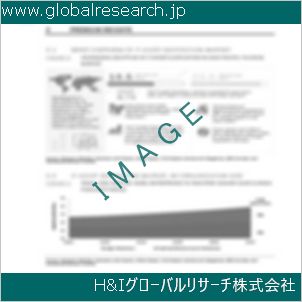Table of Contents
1 Industry Overview of Uranium
1.1 Definition and Specifications of Uranium
1.1.1 Definition of Uranium
1.1.2 Specifications of Uranium
1.2 Classification of Uranium
1.3 Applications of Uranium
1.3.1 Nuclear Application
1.3.2 Non-Nuclear Application
1.4 Industry Chain Structure of Uranium
1.5 Industry Overview and Major Regions Status of Uranium
1.5.1 Industry Overview of Uranium
1.5.2 Global Major Regions Status of Uranium
1.6 Industry Policy Analysis of Uranium
1.7 Industry News Analysis of Uranium
2 Manufacturing Cost Structure Analysis of Uranium
2.1 Raw Material Suppliers and Price Analysis of Uranium
2.2 Equipment Suppliers and Price Analysis of Uranium
2.3 Labor Cost Analysis of Uranium
2.4 Other Costs Analysis of Uranium
2.5 Manufacturing Cost Structure Analysis of Uranium
2.6 Manufacturing Process Analysis of Uranium
3 Technical Data and Manufacturing Plants Analysis of Uranium
3.1 Capacity and Commercial Production Date of Global Uranium Major Manufacturers in 2023
3.2 Manufacturing Plants Distribution of Global Uranium Major Manufacturers in 2023
3.3 R&D Status and Technology Source of Global Uranium Major Manufacturers in 2023
3.4 Raw Materials Sources Analysis of Global Uranium Major Manufacturers in 2023
4 Capacity, Production and Revenue Analysis of Uranium by Regions, Types and Manufacturers
4.1 Global Capacity, Production and Revenue of Uranium by Regions 2019-2024
4.2 Global and Major Regions Capacity, Production, Revenue and Growth Rate of Uranium 2019-2024
4.3 Global Capacity, Production and Revenue of Uranium by Types 2019-2024
4.4 Global Capacity, Production and Revenue of Uranium by Manufacturers 2019-2024
5 Price, Cost, Gross and Gross Margin Analysis of Uranium by Regions, Types and Manufacturers
5.1 Price, Cost, Gross and Gross Margin Analysis of Uranium by Regions 2019-2024
5.2 Price, Cost, Gross and Gross Margin Analysis of Uranium by Types 2019-2024
5.3 Price, Cost, Gross and Gross Margin Analysis of Uranium by Manufacturers 2019-2024
6 Consumption Volume, Consumption Value and Sale Price Analysis of Uranium by Regions, Types and Applications
6.1 Global Consumption Volume and Consumption Value of Uranium by Regions 2019-2024
6.2 Global and Major Regions Consumption Volume, Consumption Value and Growth Rate of Uranium 2019-2024
6.3 Global Consumption Volume and Consumption Value of Uranium by Types 2019-2024
6.4 Global Consumption Volume and Consumption Value of Uranium by Applications 2019-2024
6.5 Sale Price of Uranium by Regions 2019-2024
6.6 Sale Price of Uranium by Types 2019-2024
6.7 Sale Price of Uranium by Applications 2019-2024
6.8 Market Share Analysis of Uranium by Different Sale Price Levels
7 Supply, Import, Export and Consumption Analysis of Uranium
7.1 Supply, Consumption and Gap of Uranium 2019-2024
7.2 Global Capacity, Production, Price, Cost, Revenue, Supply, Import, Export and Consumption of Uranium 2019-2024
7.3 USA Capacity, Production, Price, Cost, Revenue, Supply, Import, Export and Consumption of Uranium 2019-2024
7.4 EU Capacity, Production, Price, Cost, Revenue, Supply, Import, Export and Consumption of Uranium 2019-2024
7.5 China Capacity, Production, Price, Cost, Revenue, Supply, Import, Export and Consumption of Uranium 2019-2024
7.6 Japan Capacity, Production, Price, Cost, Revenue, Supply, Import, Export and Consumption of Uranium 2019-2024
8 Major Manufacturers Analysis of Uranium
8.1 Manufacturer One
8.1.1 Company Profile
8.1.2 Product Picture and Specifications
8.1.2.1 Type I
8.1.2.2 Type II
8.1.2.3 Type III
8.1.3 Capacity, Production, Price, Cost, Gross and Revenue
8.1.4 Contact Information
8.2 Manufacturer Two
8.2.1 Company Profile
8.2.2 Product Picture and Specifications
8.2.2.1 Type I
8.2.2.2 Type II
8.2.2.3 Type III
8.2.3 Capacity, Production, Price, Cost, Gross and Revenue
8.2.4 Contact Information
8.3 Manufacturer Three
8.3.1 Company Profile
8.3.2 Product Picture and Specifications
8.3.2.1 Type I
8.3.2.2 Type II
8.3.2.3 Type III
8.3.3 Capacity, Production, Price, Cost, Gross and Revenue
8.3.4 Contact Information
8.4 Manufacturer Four
8.4.1 Company Profile
8.4.2 Product Picture and Specifications
8.4.2.1 Type I
8.4.2.2 Type II
8.4.2.3 Type III
8.4.3 Capacity, Production, Price, Cost, Gross and Revenue
8.4.4 Contact Information
8.5 Manufacturer Five
8.5.1 Company Profile
8.5.2 Product Picture and Specifications
8.5.2.1 Type I
8.5.2.2 Type II
8.5.2.3 Type III
8.5.3 Capacity, Production, Price, Cost, Gross and Revenue
8.5.4 Contact Information
…
9 Marketing Trader or Distributor Analysis of Uranium
9.1 Marketing Channels Status of Uranium
9.2 Traders or Distributors with Contact Information of Uranium by Regions
9.3 Ex-work Price, Channel Price and End Buyer Price Analysis of Uranium
9.4 Regional Import, Export and Trade Analysis of Uranium
10 Industry Chain Analysis of Uranium
10.1 Upstream Major Raw Materials Suppliers Analysis of Uranium
10.1.1 Major Raw Materials Suppliers with Contact Information Analysis of Uranium
10.1.2 Major Raw Materials Suppliers with Supply Volume Analysis of Uranium by Regions
10.2 Upstream Major Equipment Suppliers Analysis of Uranium
10.2.1 Major Equipment Suppliers with Contact Information Analysis of Uranium
10.2.2 Major Equipment Suppliers with Product Pictures Analysis of Uranium by Regions
10.3 Downstream Major Consumers Analysis of Uranium
10.3.1 Major Consumers with Contact Information Analysis of Uranium
10.3.2 Major Consumers with Consumption Volume Analysis of Uranium by Regions
10.4 Supply Chain Relationship Analysis of Uranium
11 Development Trend of Analysis of Uranium
11.1 Capacity, Production and Revenue Forecast of Uranium by Regions and Types
11.1.1 Global Capacity, Production and Revenue of Uranium by Regions 2024-2029
11.1.2 Global and Major Regions Capacity, Production, Revenue and Growth Rate of Uranium 2024-2029
11.1.3 Global Capacity, Production and Revenue of Uranium by Types 2024-2029
11.2 Consumption Volume and Consumption Value Forecast of Uranium by Regions, Types and Applications
11.2.1 Global Consumption Volume and Consumption Value of Uranium by Regions 2024-2029
11.2.2 Global and Major Regions Consumption Volume, Consumption Value and Growth Rate of Uranium 2024-2029
11.2.3 Global Consumption Volume and Consumption Value of Uranium by Types 2024-2029
11.2.4 Global Consumption Volume and Consumption Value of Uranium by Applications 2024-2029
11.3 Supply, Import, Export and Consumption Forecast of Uranium
11.3.1 Supply, Consumption and Gap of Uranium 2024-2029
11.3.2 Global Capacity, Production, Price, Cost, Revenue, Supply, Import, Export and Consumption of Uranium 2024-2029
11.3.3 USA Capacity, Production, Price, Cost, Revenue, Supply, Import, Export and Consumption of Uranium 2024-2029
11.3.4 EU Capacity, Production, Price, Cost, Revenue, Supply, Import, Export and Consumption of Uranium 2024-2029
11.3.5 China Capacity, Production, Price, Cost, Revenue, Supply, Import, Export and Consumption of Uranium 2024-2029
11.3.6 Japan Capacity, Production, Price, Cost, Revenue, Supply, Import, Export and Consumption of Uranium 2024-2029
12 New Project Investment Feasibility Analysis of Uranium
12.1 New Project SWOT Analysis of Uranium
12.2 New Project Investment Feasibility Analysis of Uranium
13 Conclusion of the Global Uranium (CAS 7440-61-1) Industry 2024 Market Research Report
| ※参考情報 ウラン(Uranium)は、周期表において元素記号「U」を持つ金属で、原子番号は92です。ウランは放射性元素であり、地球上で見つかる重金属の一つです。その主な特徴として、高い密度と重さ、そして放射性崩壊により発生するエネルギーが挙げられます。ウランは自然界において、主に鉱石の形で存在し、最も一般的なものはウラン鉱石と呼ばれています。この鉱石には、様々な化学形態としてのウランが含まれています。 ウランは主に、ウラン-238(約99.3%)、ウラン-235(約0.7%)、およびウラン-234という同位体を含んでいます。特にウラン-235は、核分裂反応を引き起こす能力があり、核エネルギーを利用するための原料として重要な役割を果たします。さらに、ウランは金属としての性質も持ち、耐蝕性が高く、他の金属との合金として使用されることもあります。 ウランの用途は主に二つの分野に分かれます。第一に、発電所における核燃料としての使用です。ウラン-235は核反応により大きなエネルギーを放出するため、原子力発電所では冷却水を沸騰させて蒸気を生み出し、それを利用してタービンを回すことで電力を生産します。ウランは化石燃料に比べて、非常に大量のエネルギーを提供できるため、省エネルギーや環境負荷の低減という観点から注目されています。 第二の用途としては、医療や産業における放射線治療や計測器の一部として使用されることがあります。ウランの放射能を利用して、特定の病気に対する治療法や、工業製品の品質管理に活用されています。 ウランの採掘と精製には高度な技術が必要です。ウラン鉱石は、採掘された後、化学的な処理を経てウラン酸化物やウラン六フッ化物などの形に精製します。これらの化合物はさらに、核燃料製造のためのウラン濃縮プロセスに利用されます。このプロセスは、ウラン-235を含む割合を高めるためのもので、最終的には原子力発電所で利用される燃料ペレットが作られます。 ウラン関連の技術や産業は、国際的な安全規制の下に厳重に管理されています。核拡散防止条約(NPT)をはじめとする国際的な枠組みは、ウランを使用する国々が核兵器を開発しないようにするための取り決めを定めています。これは、平和的な利用を促進しつつも、核エネルギーの持つリスクを抑えるための重要な措置です。 一方で、ウランの使用には環境や健康に対する影響も存在します。放射性物質であるため、適切な管理が行われないと、土壌や水源の汚染、放射線被曝のリスクが伴います。そのため、ウラン関連のプロジェクトには、環境アセスメントやリスク評価が欠かせません。 多くの国では、ウランを平和的に利用することによるエネルギー供給の安定化を目指しており、持続可能な発展の一環として原子力エネルギーを位置づけています。再生可能エネルギーが普及する中でも、ウランは安定した電力供給を支える重要な資源と考えられています。 また、ウランのリサイクルや再処理技術も進展しています。使用済み核燃料からウランを再抽出し、再び燃料として利用する技術が研究されており、これによりウラン資源の有効活用が図られています。さらに、使用済み燃料を用いた核廃棄物管理も重要な課題であり、長期的な保管や安全な処分方法の確立が求められています。 このように、ウランはその重要性とリスクを両立させながら、現代社会においてエネルギー供給や医療など、さまざまな分野において広く利用されています。ウランを巡る技術や政策の進展は、将来のエネルギー問題に対する解決策として注目を集めていますが、それと同時に、環境保護や安全性の確保がますます重要なテーマとなっています。 |
❖ 免責事項 ❖
http://www.globalresearch.jp/disclaimer


-gr.jpg)









